 |
|
GOES-R (Atlas V) 19 November 2016 |
Space Launch Complex 41 Cape Canaveral Air Force Station |
| A United Launch Alliance (ULA) Atlas V rocket carrying the Geostationary Operational Environmental Satellite R-series (GOES-R) for the National Aeronautics and Space Administration (NASA) and the National Oceanic Atmospheric Administration (NOAA) lifted off on 19 November 2016 from Cape Canaveral Air Force Station Space Launch Complex-41 at 6:42 p.m. EST. The Atlas V launched the GOES-R spacecraft to geosynchronous transfer orbit. As the next generation of GOES satellites, GOES-R will produce images of weather patterns and severe storms as frequently as every 30 seconds, which will contribute to more accurate and reliable weather forecasts and severe weather outlooks, including thunderstorm, hurricane and tornado tracking and intensity forecasting. GOES-R will also provide improved detection and observations of meteorological phenomena that directly impact public safety, protection of property and economic health and development. | |
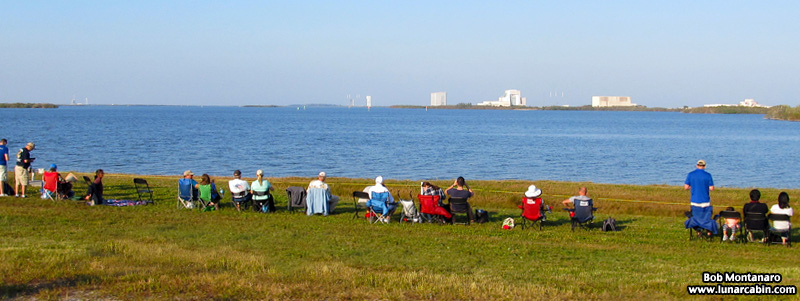 |
|
The launch guests settle in at the NASA Causeway viewing area. |
|
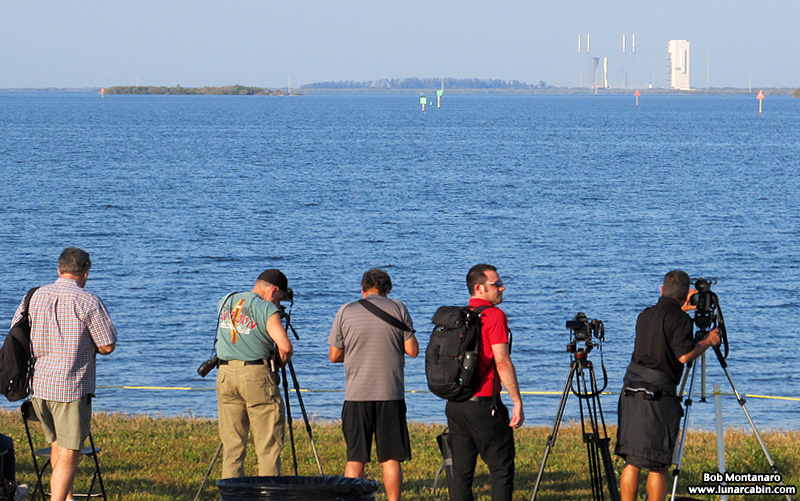 |
|
The photographers set up. |
|
 |
|
| The Atlas V waits patiently on SLC-41. The structure at right with the American flag on it is the Vertical Integration Facility. The Atlas V rocket was stacked and testing inside the facility with the GOES-R spacecraft eventually placed on top before the whole vehicle was hauled out to the pad on rails for the launch. | |
 |
|
A plume of liquid oxygen boils off during rocket fueling. |
|
 |
|
Cape Canaveral bathed in golden light at sunset. |
|
 |
|
| The Atlas Spaceflight Operations Center (ASOC) is just to the right of the buildings in the previous image. The receiving and inspection of launch vehicles, communication center, spacecraft control room, launch control center, mission director’s center, and International Traffic in Arms Regulations (ITAR) compliance facility are all located here. | |
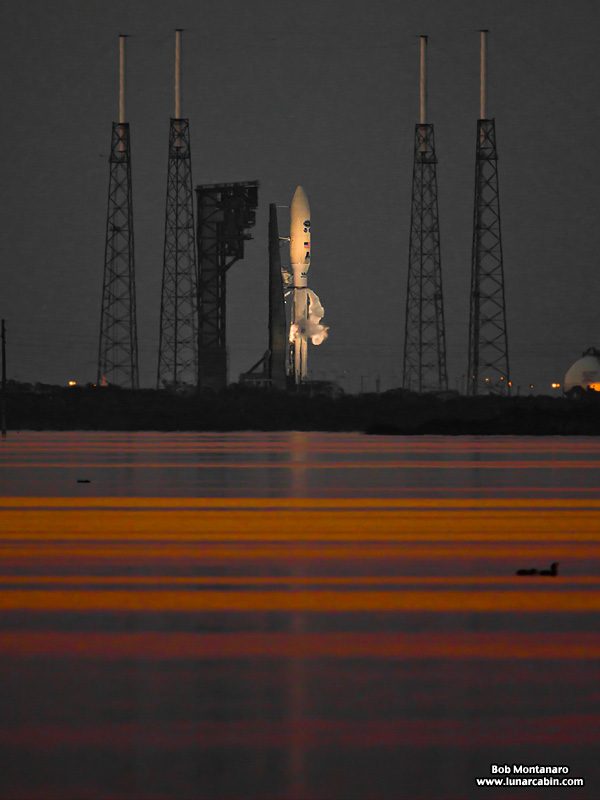 |
|
The setting Sun casts its last colorful rays upon the water as the Atlas V awaits its leap into space. |
|
 |
|
| A technical problem with the Atlas V and an issue with the Eastern Range pushed the launch to the end of the launch window at 6:42 p.m. making for a nighttime launch. The delays led to some suspense about whether the Atlas would launch this night or not. | |
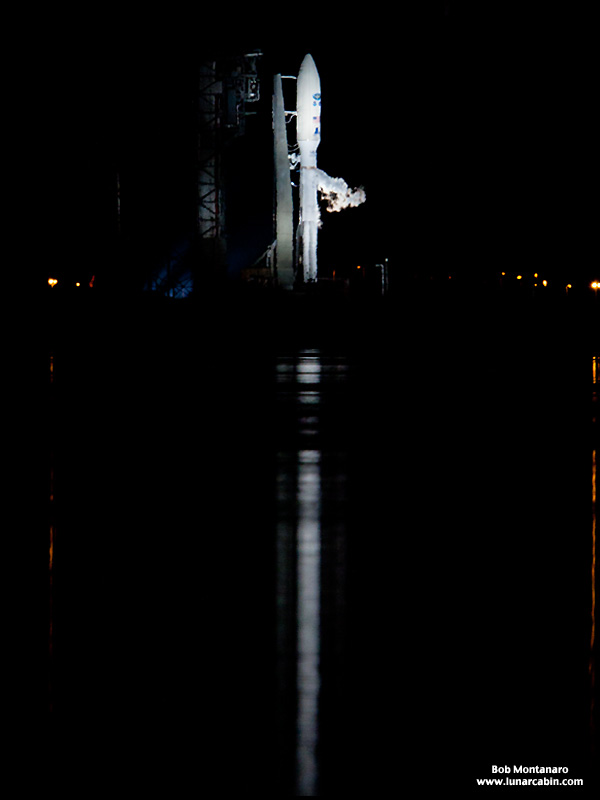 |
|
Still waiting for technical and range issues to be resolved. |
|
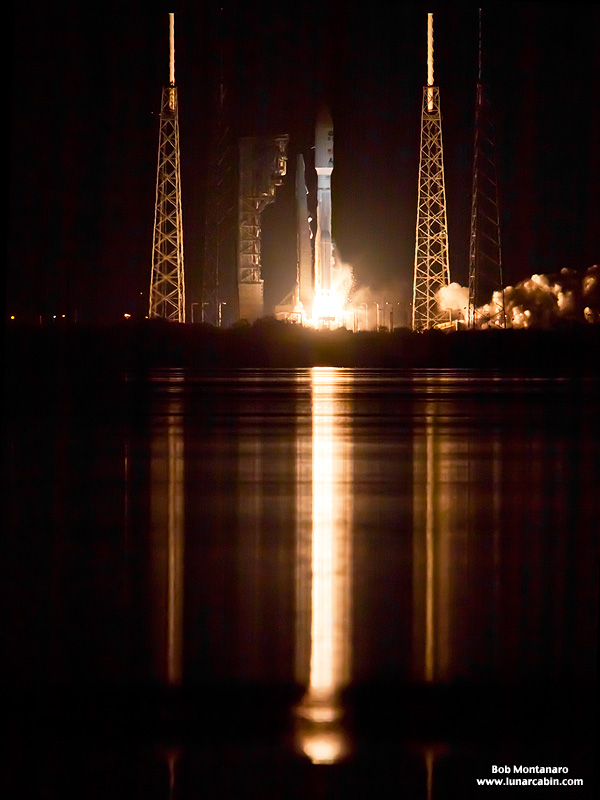 |
|
Liftoff at 6:42 p.m.! |
|
 |
|
 |
|
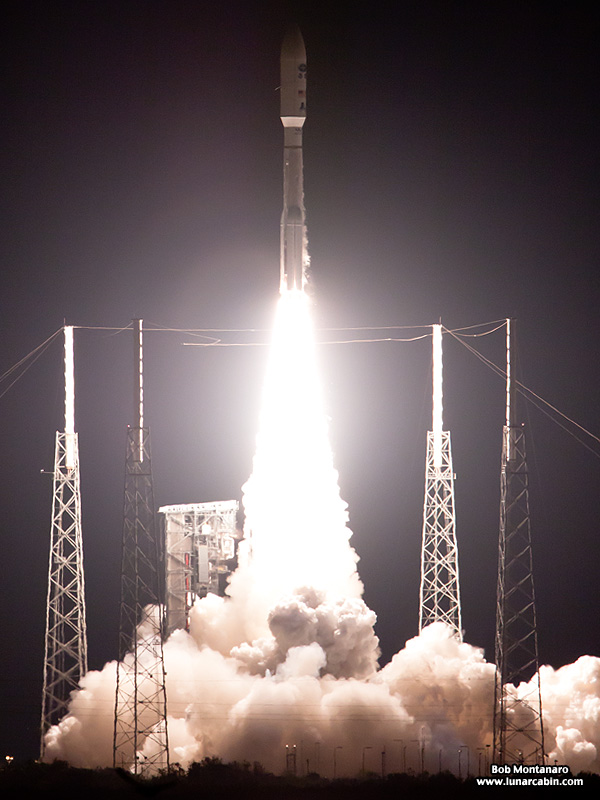 |
|
 |
|
 |
|
 |
|
 |
|
 |
|
 |
|
The four solid rocket boosters separate from the Atlas V. |
|
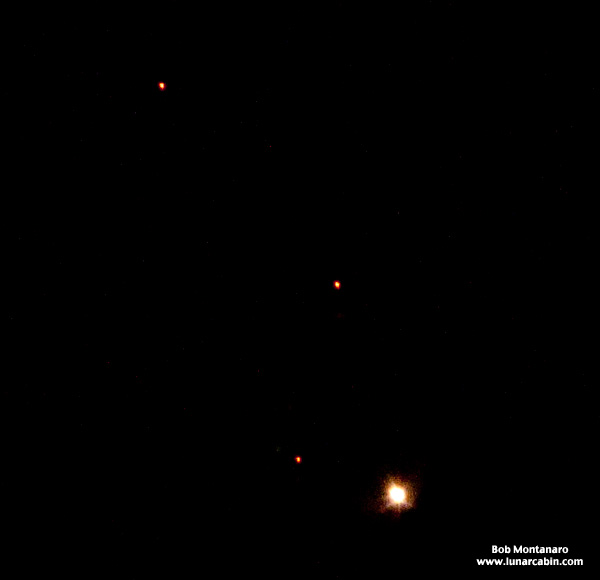 |
|
Three of the four boosters can be seen falling away as the Atlas continues on into orbit. |
|
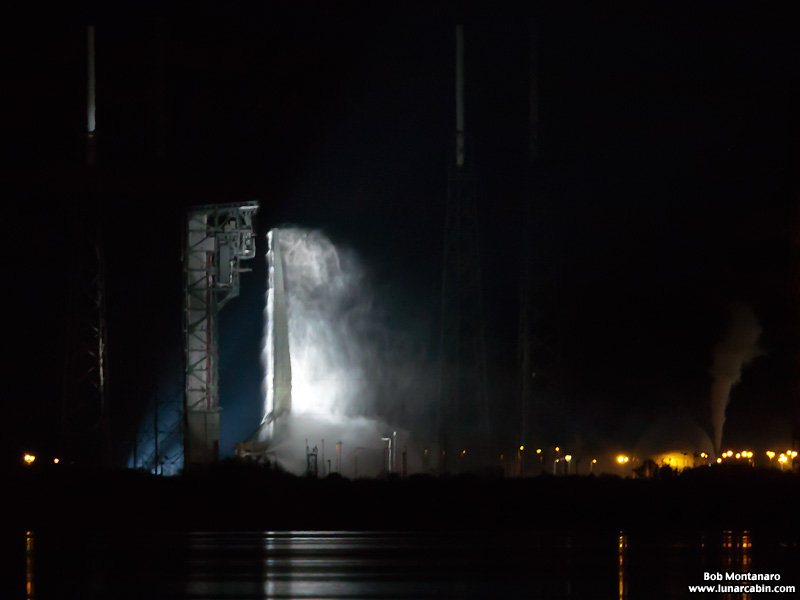 |
|
The aftermath of the launch at SLC-41. |
|
All contents copyright Lunar Cabin |
|